Designing your home can be fun, but mistakes can affect the look and feel. Here are 25 common interior design mistakes to watch out for and how to avoid them.
25 Common Interior Design Mistakes to Avoid
1. Using the Wrong Scale

One mistake is choosing furniture that’s either too big or too small for the room. Large pieces make a space feel tight, while small items leave it looking empty. Measure your room and pick furniture that fits well.
Tip: Always measure your room before buying furniture.
2. Too Many Heirlooms in One Space
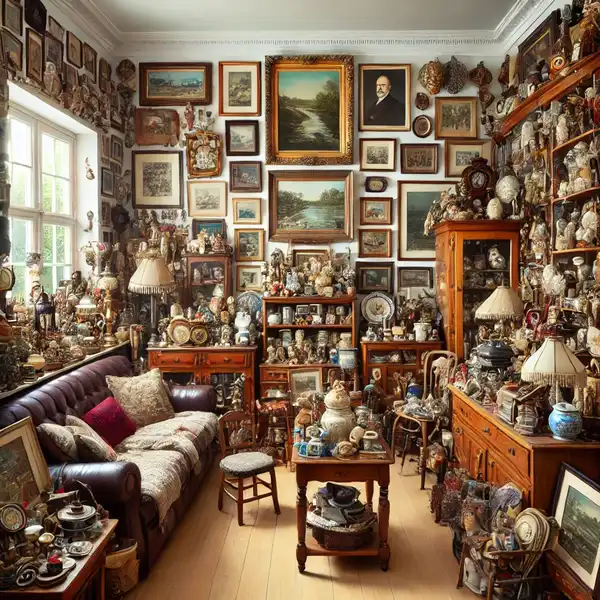
Displaying too many heirlooms can make a room feel cluttered. Instead, spread them throughout the house to keep things balanced and fresh.
Tip: Display only a few heirlooms at a time to avoid overcrowding.
3. Wrong Size and Style of Artwork
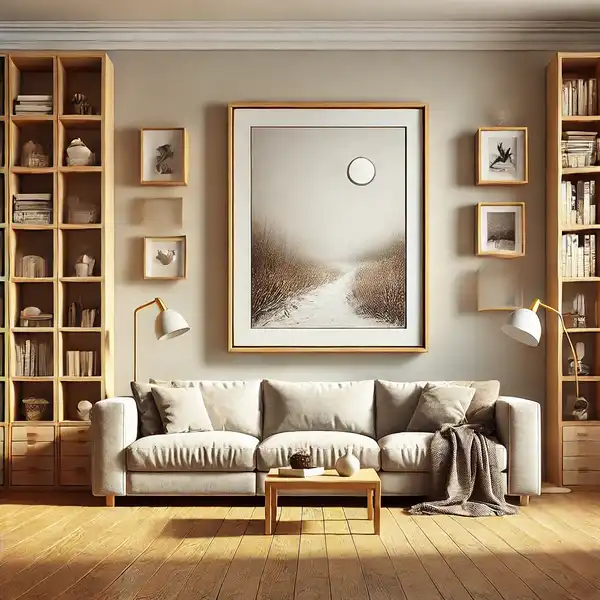
Art can enhance a room, but if it’s the wrong size or style, it can throw things off. A small painting on a large wall looks odd, while too large a piece can overwhelm a small space.
Tip: Make sure your artwork fits the scale of your room.
4. Choosing Paint First, Fabrics Later
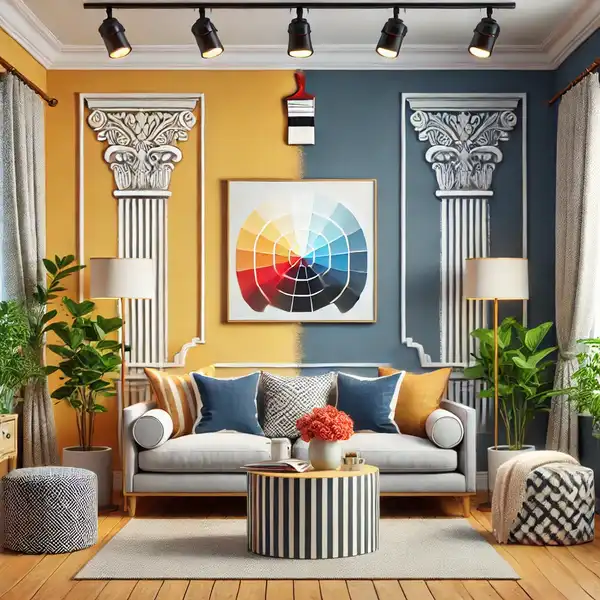
It’s easier to match paint to fabrics than to match fabrics to paint. Pick your fabrics first, then choose a paint color that complements them.
Tip: Start with fabrics, then choose your paint.
5. Bland Neutral Designs
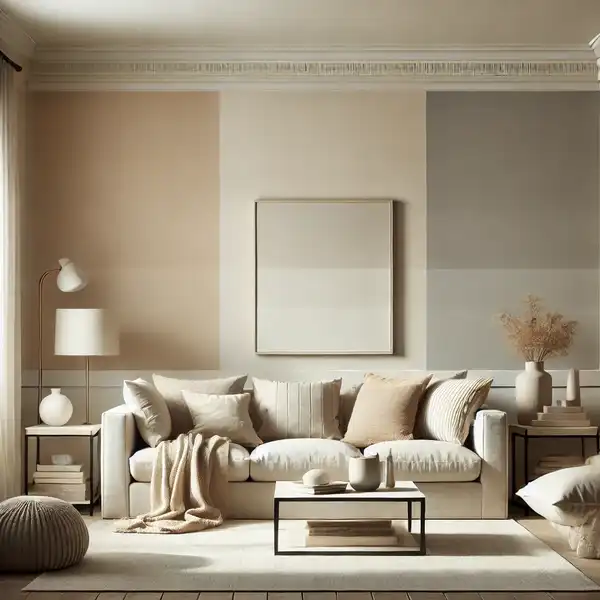
Neutral colors are popular, but too much beige or gray can feel dull. Add texture and pops of color to make a neutral room more interesting.
Tip: Use textured fabrics and colorful accents to brighten a neutral space.
6. Following Trends Without Adding a Unique Touch

Trends change quickly, but your home should show your style. If you only follow trends, your home might feel lifeless. Add trends in small ways, like with pillows or decor, and mix them with classic pieces.
Tip: Choose trendy items that are easy to replace, like decor or accessories.
7. Not Prioritizing the Focal Point
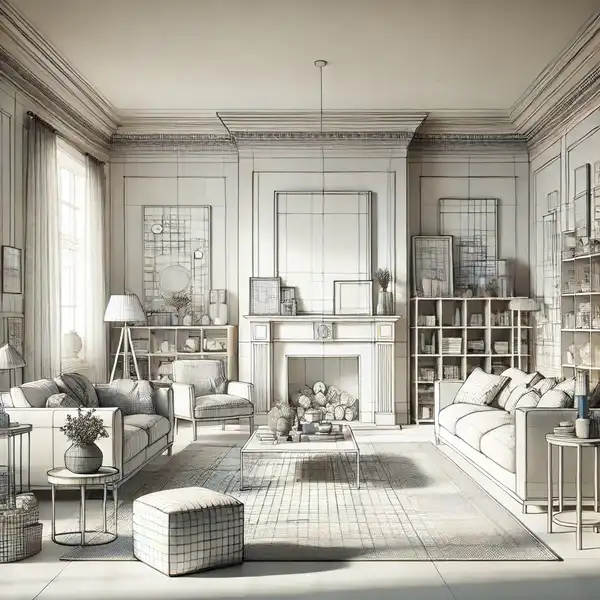
Every room needs a main focus, like a fireplace, big window, or artwork. Without one, the room can feel messy. Find a focal point in each room and arrange furniture for a balanced look.
Tip: Place furniture to highlight the room’s best features.
8. Avoiding Multi-Layer Lighting
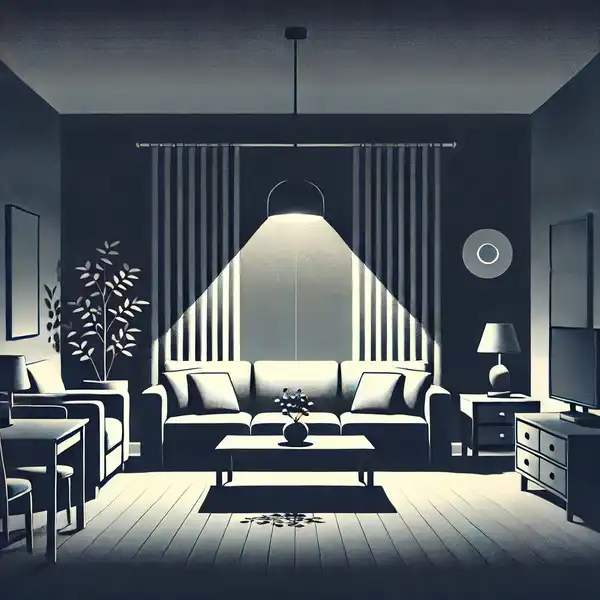
Using just one light source makes a room feel flat. A well-lit room has multiple layers, like ambient, task, and accent lighting. This adds depth and makes the room more functional.
Tip: Use floor lamps, table lamps, wall sconces, and ceiling lights.
9. No Space Between Furniture

When furniture is too close together, a room feels cramped. Leave enough room for people to move comfortably between pieces, creating an open and inviting space.
Tip: Keep at least 18 inches between the sofa and coffee table.
10 Installing a Rug that Doesn’t Match the Aesthetic
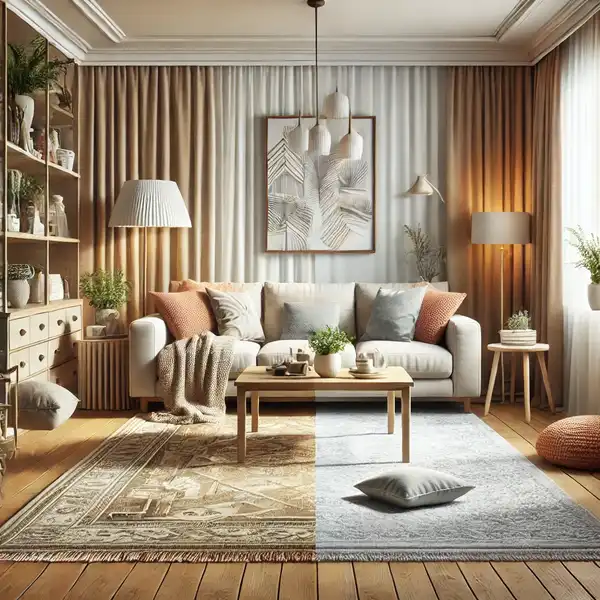
Rugs can either complete a room or make it feel off. Make sure your rug matches the room’s colors, style, and size. A rug that’s too small can break the room’s flow, while one that’s too large can overwhelm it.
Tip: For living rooms, the rug should fit under all the main furniture pieces.
11. Overdoing Metals and Layers
Mixing metals can add interest to a room, but too many metals can look chaotic. Choose a dominant metal and use others sparingly to avoid overwhelming the space.
Tip: Stick to two or three metal finishes to balance the room.
12. Improper Space Planning
Poor space planning can make even the most beautiful furniture look awkward. Consider how you’ll use the room and arrange furniture to suit those needs. Make sure there’s enough room for people to move around comfortably.
Tip: Create a floor plan before buying furniture to see how everything will fit.
1.3 Picking Form Over Function
Choosing furniture or decor based on looks alone can lead to uncomfortable or impractical spaces. Always consider how items will be used before making a purchase.
Tip: Make sure sofas, chairs, and other furniture are comfortable and durable for daily use.
14. Overlooking Tiny Details
Tiny details like light switches, door handles, and cabinet hardware can greatly impact the overall design. Overlooking these details can make a room feel unfinished.
Tip: Choose hardware that complements the room’s style and adds to the design.
15. Drenching the Entire Home in One Color
Using the same color throughout the entire home can make it feel monotonous. While a cohesive color scheme is important, it’s also important to introduce variety with accent colors, textures, and patterns.
Tip: Use different shades of your main color or add pops of complementary colors.
16. Forgetting the Importance of the Entryway
The entryway sets the tone for the rest of the home. Ignoring this space can make your home feel unwelcoming. Add elements like a mirror, a rug, and storage to make the entryway functional and stylish.
Tip: Choose decorative and practical items, like a bench with storage.
17. Compromising on Aesthetics for Budget
While it’s important to stay within your budget, compromising too much on aesthetics can lead to a home that doesn’t reflect your style. Instead of buying everything immediately, prioritize key pieces and invest in quality over quantity.
Tip: Focus on one room at a time and invest in timeless pieces.
18. Inadequate Planning and Preparation
Jumping into a design project without a plan can lead to costly mistakes. Before you start decorating, take the time to plan out your space, choose a color scheme, and determine your budget.
To guide your design, Create a mood board with colors, textures, and furniture ideas.
19. Getting a Heap of Pillows on Every Furniture
Pillows can add comfort and style, but too many can clutter the space and make it hard to sit. Keep it simple by choosing a few pillows that complement the room’s colors and textures.
Tip: Stick to two or three pillows per sofa to maintain a clean look.
20. Overdoing Draperies
Draperies can add elegance to a room, but heavy or overly decorated drapes can make a space feel stuffy. Opt for airy fabrics that allow natural light to flow through the room.
Tip: Choose simple, neutral drapes to let the rest of the room’s design shine.
21. Ignoring Architectural Details
Ignoring a room’s architecture, such as crown molding or built-in features, can make the design feel disconnected. Use these features to enhance the overall design and create a cohesive look.
Tip: Highlight architectural details with contrasting paint or decor elements.
22. Overcrowding a Small Space
In a small space, less is more. Overcrowding the room with furniture and decor will make it feel cramped and chaotic. Choose a few statement pieces and keep the layout simple to maximize space.
Tip: Opt for multi-functional furniture, like a sofa that doubles as storage.
23. Lack of Personalization
Your home should reflect your personality, but copying a design from a magazine or showroom can make it feel impersonal. To make the space uniquely yours, add personal touches like family photos, art, or items from your travels.
Tip: Mix in items that tell your story for a personal touch.
24. Forgetting About Flow
A home should feel connected from room to room. Ignoring the flow of your home can make each space feel disjointed. Create a cohesive look using a consistent color palette and design elements throughout the house.
Tip: Use similar materials and colors to tie the rooms together.
25. Not Adjusting Decor for Seasons
Keeping the same decor year-round can make your home feel stagnant. Change pillows, throws, and small decor items with the seasons to keep your space fresh.
Tip: Use lighter colors and fabrics in the summer and richer tones in the winter.
By avoiding these common interior design mistakes, you can create a functional and beautiful home. Remember, planning and paying attention to detail are key to successful design. Keep your space personal, comfortable, and well-balanced for a timeless look.